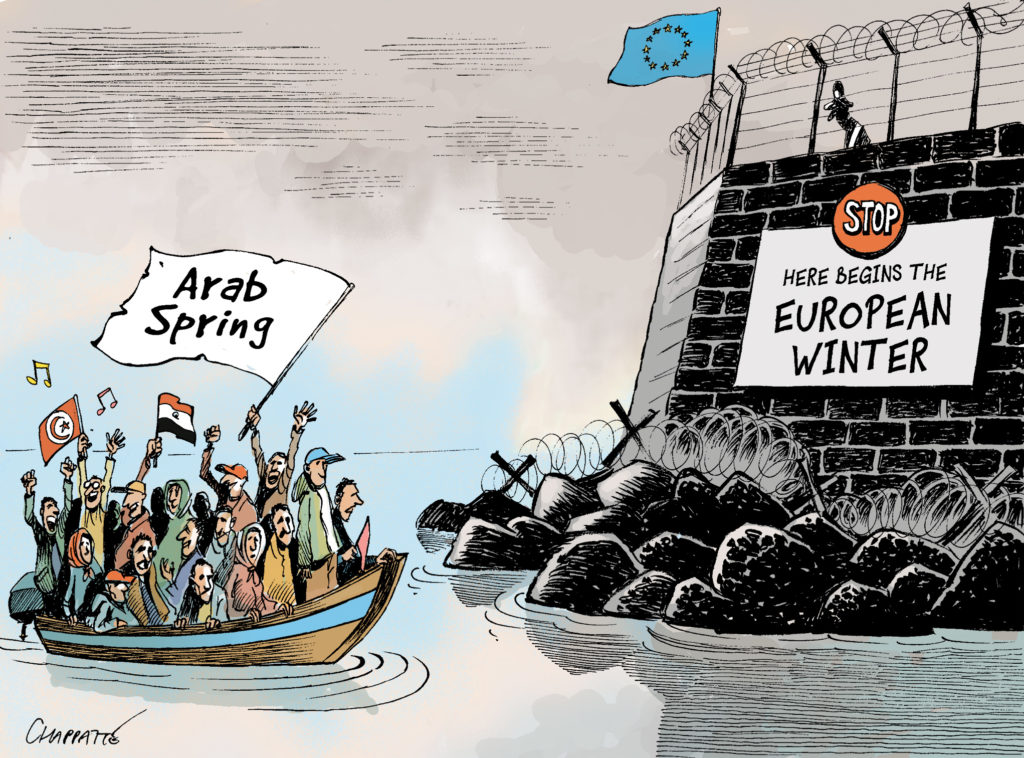The Moving Fault Lines of Inequality
Five Maps on Inequality
-
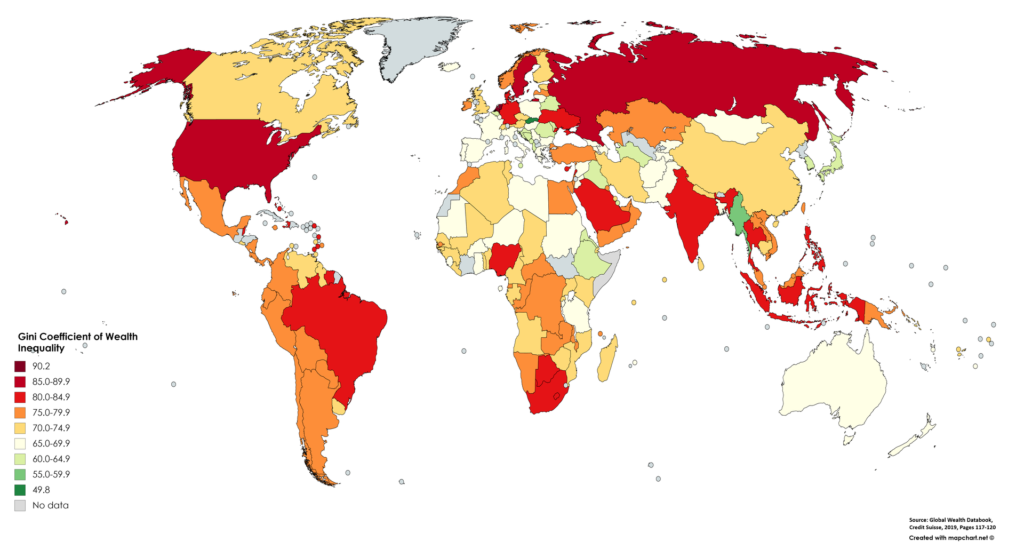
Gini Coefficient of Wealth Inequality in 2019
DennisWikipediaWiki, CC BY-SA 4.0, via Wikimedia Commons.
-
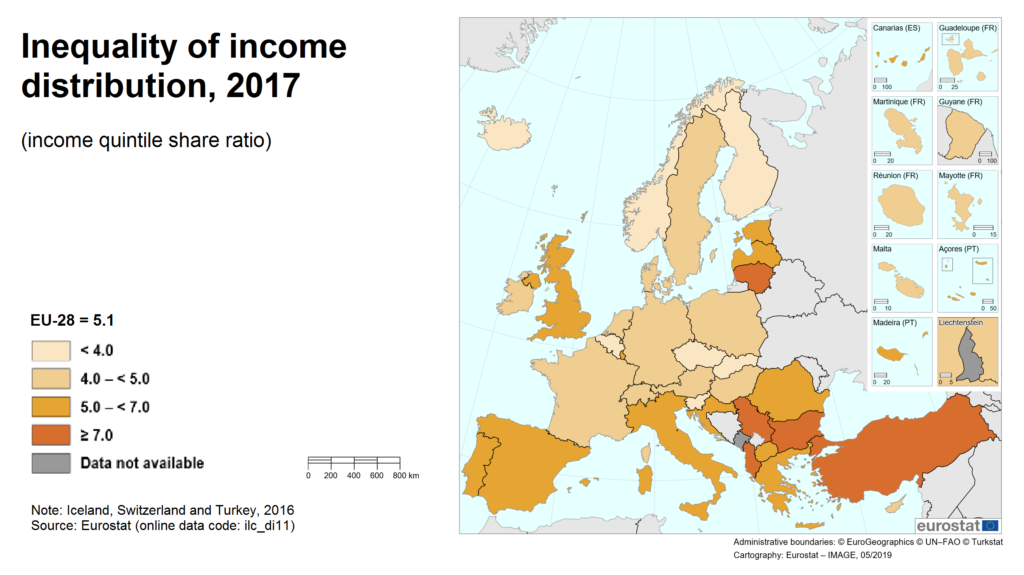
Income Inequality in EU Member States
In the EU Member States, on the basis of this measure, Czechia and Slovenia had the lowest income inequality in 2017 (3.4). These were followed by three other Member States with ratios below 4.0: Finland (3.5), Slovakia (3.5), and Belgium (3.8). In contrast, income inequalities were much higher (above 6.0) in Greece (6.1), Latvia (6.3), Romania (6.5), Spain (6.6), Lithuania (7.3) and highest in Bulgaria (8.2). The source dataset with the latest available figures can be found here. https://ec.europa.eu/
-
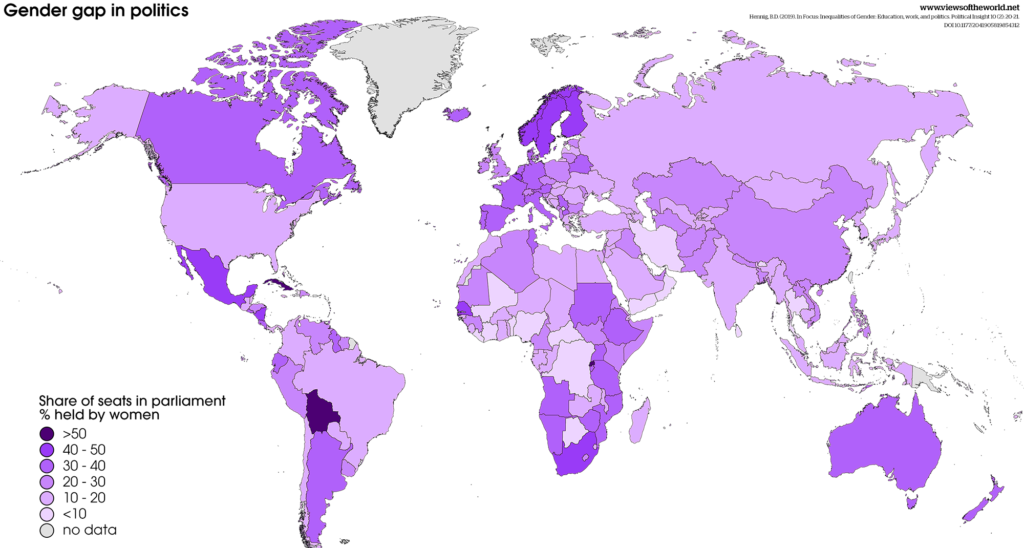
Gender Gaps in Politics in 2018
Benjamin Hennig, “Inequalities of Gender: Education, Work, and Politics”, 9 September 2019.
-
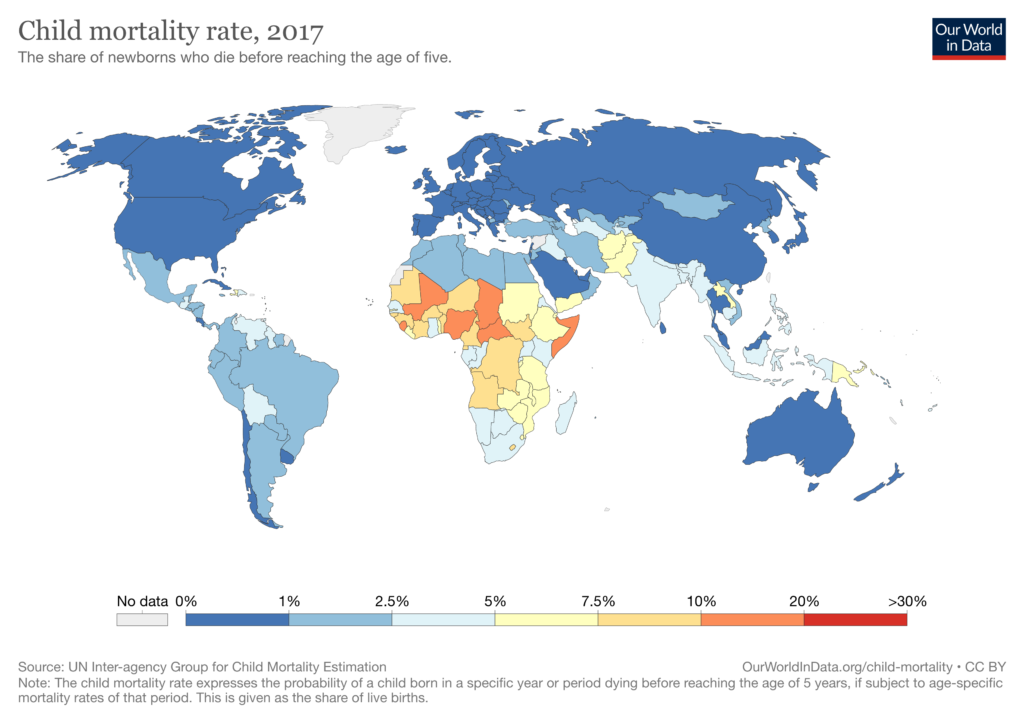
Child Mortality in 2017
Share of newborn who die before reaching the age of 5.
Credit: Our World in Data, CC BY. Source: UN Inter-agency Group for Child Mortality Estimation. -
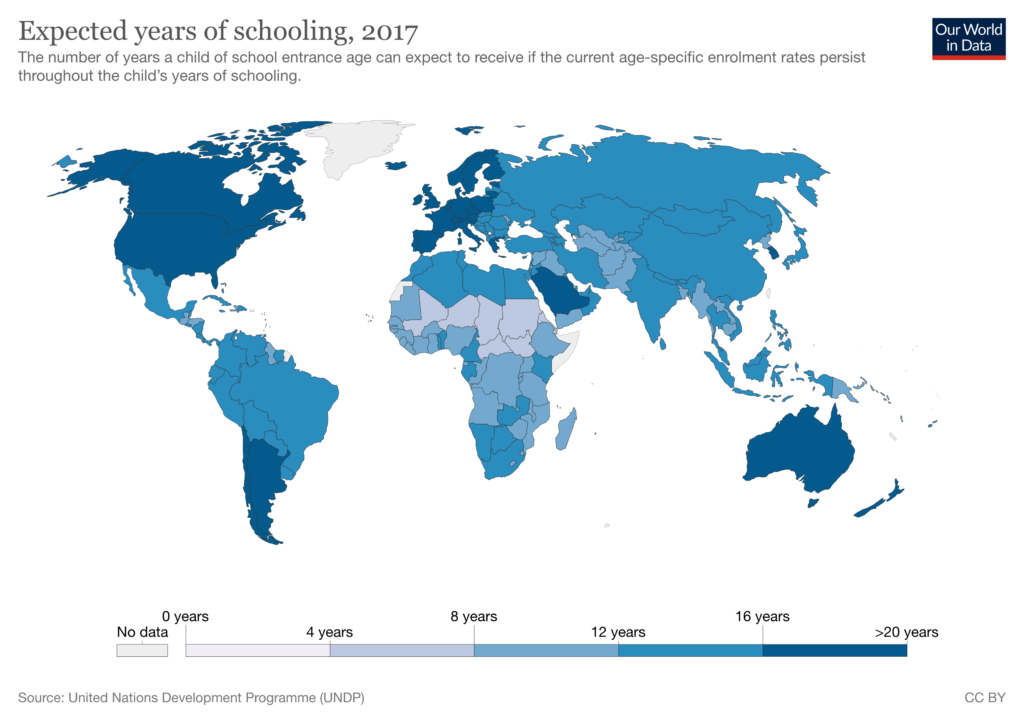
Expected Years of Schooling in 2017
The number of years a child of school entrance age can expect to receive if the current age-specific enrollment rates persist throughout the child’s years of schooling. Credit: Our World in Data, CC BY. Source: UNDP.
- Gini Coefficient of Wealth Inequality in 2019
- Income Inequality in EU Member States
- Gender Gaps in Politics in 2018
- Child Mortality in 2017
- Expected Years of Schooling in 2017
© Global Challenges: The Graduate Institute Dossiers

